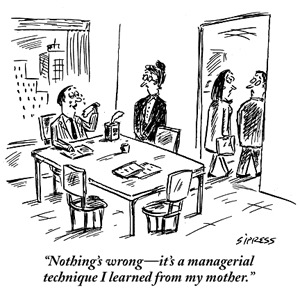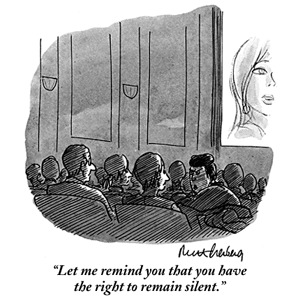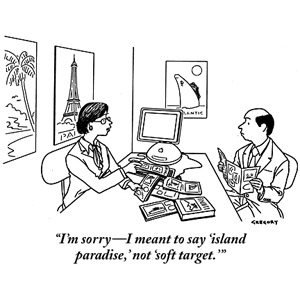When it came time for Obama to write his fiscal
2011 budget, which was his next big opportunity to help the economy, he
began to chip away at some dramatic campaign commitments. For instance,
in 2008 he had promised a bold space program. “As President,” he had
said, “I will establish a robust and balanced civilian space program”
that “not only will inspire the world with both human and robotic space
exploration but also will again lead in confronting the challenges we
face here on Earth, including global climate change, energy
independence, and aeronautics research.” In November, 2009, his
advisers, in a memo, delivered some bad news: “The 10-year deficit has
deteriorated by roughly $6 trillion.” The next sentence was in boldface
type and underlined: “Especially in light of our new fiscal context, it
is not possible to achieve the inspiring space program goals discussed
during the campaign.”
Obama was told that he should cancel
NASA’s
Bush-era Constellation program, along with its support projects, like
the Ares launch vehicles, which were designed to return astronauts to
the moon by 2020. The program was behind schedule, over budget, and
“unachievable.” He agreed to end it. During the stimulus debate, Obama’s
metaphorical moon-shot idea—the smart grid—was struck down as
unworkable. Now the Administration’s actual moon-shot program was dead,
too.
As he worked on his budget, Obama scoured
his briefing materials for ways to cut spending. Next to a discussion of
continuing “spending levels associated with the Recovery Act,” he
wrote, “Not possible.” He even questioned funding for the Department of
Veterans Affairs, which is generally considered politically untouchable.
It was going to receive a 7.2-per-cent increase, the largest two-year
percentage increase in the department’s budget in more than thirty
years. Obama was informed that it would “underscore the Administration’s
commitment to our veterans. Specifically, it will do so by continuing
to improve care for our wounded warriors, expand programs to reduce and
prevent the incidence of homelessness among veterans.” Obama wrote,
“Given what we did last year, does the increase need to be this high?”
Obama
knew that his most ardent supporters would attack the budget. He
planned to increase Pentagon funding while decreasing some popular
domestic programs. He was told that the proposal presented him with “a
broad vulnerability.” For example, the Low Income Home Energy Assistance
Program, which helps many poor people, especially in the Northeast, was
to be cut in half. “Not good,” Obama wrote. The Small Business
Administration “should do more with what it has,” he wrote. Poorly
performing job-training centers “have to be replaced w/ something that
does work.” He underlined “does.”
His aides also recommended that
he give back to the government two hundred and four million dollars left
over from the Presidential Election Campaign Fund, the
campaign-financing program that, in 2008, Obama had decided not to use.
Obama’s controversial decision now had a chance to save the government
money, but there was a hitch. The program is financed by taxpayers who
ask the I.R.S. to send three dollars from their annual taxes to the
program. “Rescinding the dollars in the fund may be seen as overriding
taxpayer choice,” he was told, “and also as an attack on public
financing that would decrease the funds available for the 2012
election.” He wrote, “Need to be careful here.”
One
Cabinet official made it clear that she did not share the President’s
growing commitment to coupon-clipping: Secretary of State Hillary
Clinton. She rejected the White House’s budget for her department, and
wrote the President a six-page letter detailing her complaints. Some in
the White House saw the long letter as a weapon, something that could be
leaked if Clinton didn’t get her way. “At the proposed funding levels,”
Clinton wrote, “we will not have the capacity to deliver either the
full level of civilian staffing or the foreign assistance programs that
underlie the civilian-military strategy you outlined for Afghanistan;
nor the transition from U.S. Military to civilian programming in Iraq;
nor the expanded assistance that is central to our Pakistan strategy.”
She went on, “I want to emphasize that I fully understand the economic
realities within which this budget is being constructed, and I share
your commitment to fiscal responsibility. But I am deeply concerned
about these funding levels.”
The letter contained indications of a
real relationship between the former rivals. “You and I often speak
about the need to restore the capacity of civilian agencies,” Clinton
noted. But the general tone was stern and businesslike. It ended with an
urgent plea for Obama to intervene on her behalf. “There is little room
for progress unless you provide guidance that you are open to an
increase in overall funding levels,” she wrote. Obama did indeed fight
for some additional money for Clinton.
A year
into Obama’s Presidency, a Gallup poll showed how starkly he had failed
at reducing partisanship. Obama was the most polarizing first-year
President in history—that is, the difference between Democratic approval
of him and Republican disapproval was the highest ever recorded. The
previous record-holder was Bill Clinton. Obama also faced an electorate
with a historically low level of trust in government. Since the Vietnam
War, faith in Washington has plummeted, and it always declines when the
economy falters. On the eve of Obama’s election, trust was at a record
low. The public had turned sharply away from government at a moment when
he was asking it to do more.
Toward the end of 2009, the
President continued to struggle with the hard compromises he would have
to make in writing his budget and planning initiatives for the new year.
David Axelrod, Dan Pfeiffer, the White House communications director,
and Mona Sutphen, Obama’s deputy chief of staff, sent him a memo about
how he could find his way out of his slump. They wrote:
The initial glow of the Obama
Administration has yielded to the realization that the nation’s problems
are stubborn and won’t be solved painlessly or overnight. Even as a
majority of Americans retain a high regard for you, there has been a
resurgence of jaundice about Washington’s ability to deal with these
problems responsibly, and a renewed anger over the continued dominance
of hyper-partisanship and special interests.
At
the same time, Americans still yearn for a “new era of responsibility.”
But an expensive stimulus plan, bank and auto bailouts, juxtaposed with
their own daily struggles, have eroded their confidence that such an
era is at hand. Despite this skepticism, the American people are
receptive to a message that emphasizes that you have taken the tough
steps that needed to be taken to pull the nation back from the brink.
The
State of the Union message would remind voters of the inspirational
Obama of the 2008 campaign, and also make clear that he was listening to
the public’s concerns about the government. After a year of intense
policymaking and legislating, Obama’s political advisers were attempting
to reassert authority over the economic team. The recommendations were
heavy on public relations and attempted to reposition Obama to appear
less hostile to the concerns of the anti-government right. “Democratic
Presidents rarely address small businesses in their message,” they
advised Obama, “but you could use the opportunity to discuss what small
businesses mean for the freedom to be your own boss, to pursue your own
ideas and for our spirit of innovation.”
Axelrod and other Obama
political advisers saw anti-Keynesian rhetoric as a political necessity.
They believed it was better to channel the anti-government winds than
to fight them. As much as it enraged Romer and outside economists, the
White House was on to something. A President’s ability to change public
opinion through rhetoric is extremely limited. George Edwards, after
studying the successes of Franklin Roosevelt, Lyndon Johnson, and Ronald
Reagan, concluded that their communications skills contributed almost
nothing to their legislative victories. According to his study,
“Presidents cannot reliably persuade the public to support their
policies” and “are unlikely to change public opinion.”
Obama’s
State of the Union speech, his aides said, “was an opportune moment to
pivot to themes of restraining government spending.” They advised him to
consider “freezing or cutting the discretionary budget,” instituting a
senior-level government pay freeze, and cancelling some federal
programs. They even noted that his government-reform efforts were “the
most dramatic since Reagan’s conservative downsizing.”
Finally,
they warned that the process of securing the President’s legislative
agenda had damaged his distinctive brand. “Perhaps more than in any
other area,” they wrote, “it is essential that we use the SOTU to
reclaim the high ground on challenging the status quo in Washington.”
They feared that Obama was being damaged by his association with the
deal-making in Congress. “The speech presents a moment when you can
begin to distance the Administration from Congress on issues of special
interest capture and transparency.”
In the end, Obama’s entire
economic team went along with the new push for austerity, at least
symbolically. They recommended that Obama endorse the idea of a
bipartisan fiscal commission, accepting a proposal that the President
had rejected months earlier—and he agreed. Ten days after the Axelrod
memo, on December 20th, Summers, Orszag, Geithner, and even Romer
advised the President on how to tackle the deficit in 2010. They told
him that he needed to cut eighty-five billion dollars in spending in
order to submit a fiscally credible budget to Congress.
They
ticked off a list of ideas. Instead of a one-year non-defense-spending
freeze, as they had previously suggested, they recommended a three-year
freeze. The freeze was controversial: liberals would call it mad to
restrain federal spending during a recession; Republicans would call it
trivial. But it would save twenty billion dollars. “Your economic team
believes that it is worth doing this,” his aides wrote in another memo,
“both to reduce the deficit and indicate that the Administration is
serious about fiscal discipline.” Obama drew a check mark next to the
recommendation.
In the December 20th memo, they resorted to
gimmickry. In his first budget, Obama had prided himself on “honest
budgeting,” declining to employ the fanciful assumptions that the
previous Administration had used to hide the costs of government. On
disaster relief, for example, he had estimated that the government would
need twenty billion dollars a year, a figure based on the statistical
likelihood of major disasters requiring federal aid. Now Obama’s aides
reminded him that Congress had ignored his “ ‘honest budgeting’
approach,” and perhaps they should, too. They proposed “$5 billion per
year for disaster costs.” Obama drew another check mark. The White House
could also save billions by fiddling with the way it presented savings
from Obama’s health-care-reform bill. Check.
Finally, Obama’s
economic team recommended a new five-per-cent tax—what it called a
“bubble rate”—on people making more than two hundred and fifty thousand
dollars per year. It would bring in eleven billion dollars in 2015.
Here, Obama made another check mark, but he wrote, “Best discuss.” When
his aides returned with a deeper analysis, it was clear that their tax
idea would violate Obama’s campaign pledge against raising taxes for the
middle class. Obama rejected the tax hike.
At about the same
time, in January, 2010, just as the Massachusetts Republican Scott Brown
was rising in the polls in the race to replace the late Senator Edward
Kennedy, Orszag and Ezekiel Emanuel, the chief of staff’s brother and a
health-care adviser, recommended that the government pay federal
employees to participate in a pilot program to study the most effective
treatments for patients.
Obama had been bold on health care. But, as
Summers had noted in a previous memo, there wasn’t enough “bandwidth” to
pass many other priorities. Eighteen months into his Presidency, his
economic advisers offered him essentially three paths: an ambitious new
jobs package that he could personally advocate as an “emergency
expenditure”; “a fiscally significant (several hundred billion dollars
over ten years) deficit reduction package”; and an array of “new
policies that have greater symbolic than deficit-reducing impact.” The
ambitious options were seen as impractical. Congress was unwilling to
pass “nearly as much fiscal stimulus” as Obama wanted. A
deficit-reduction package would be “a very difficult undertaking that
would entail resurrecting ideas you rejected in the budget process” and
could “engender substantial political opposition, set up members of
Congress for hard votes, and, possibly, produce a legislative defeat for
the Administration.” Obama decided against both of the more ambitious
ideas. He was left with “smaller, more symbolic efforts” that “are less
politically risky,” like reforming federal travel and cutting military
spending on congressional junkets. “The challenge here is to break
through message-wise and convince the media, financial markets, and the
public at large that these measures signify real efforts to restrain
spending,” Obama’s economic team wrote.
They gave him one other
crucial piece of advice. The tax cuts passed by George Bush would soon
expire. Obama favored extending Bush’s middle-class cuts and ending the
upper-income cuts. Tackling the deficit would be impossible otherwise.
But his economic team warned that, given the political climate, the
extension of
all the Bush tax cuts “could gain serious traction.”
Not to worry, his political team insisted. Pelosi would never allow
that to occur. We’re “confident that the Speaker would not agree to this
becoming law,” Obama was assured.
But the President had no way to
get much more out of Congress in 2010—gas, brakes, or tax cuts. That
summer, he won a modest small-business bill and some legislation to save
the jobs of teachers, but the “big bang” phase of his Presidency turned
into a whimper as the midterm elections began to dominate the
Administration’s attention that summer and fall. When Republicans took
over the House and expanded their ranks in the Senate, Obama lost much
of his ability to legislate. In 2011, he proposed a stimulus measure
called the American Jobs Act and gave a speech to Congress in which he
demanded twenty times that legislators pass his jobs bill. But the plan
didn’t go anywhere. His successes came through foreign-policy choices
that largely circumvented Congress: the successful intervention in
Libya; the withdrawals from Iraq and Afghanistan; the killing of Osama
bin Laden. When Congress changed hands in 2010, the curtain had come
down on Obama’s domestic agenda.
Crisis has
often been the wellspring of political transformation in America.
Obama’s situation in 2009—a discredited opposition party and an economic
meltdown—seemed remarkably similar to the circumstances that Franklin
Roosevelt faced after he defeated Herbert Hoover, in 1932, and fashioned
the modern welfare state; or when Lyndon Johnson took power after the
trauma of John F. Kennedy’s assassination, in 1963, and pushed through
the Great Society. But neither 9/11 nor the great recession transformed
American politics in a way that overcame structural polarization.
Despite
the Republican takeover of the House, Obama’s third year in office
started with a flicker of bipartisanship. Obama, notwithstanding the
dire warning of his team, accepted a deal to temporarily extend all the
Bush tax cuts in exchange for some fiscal stimulus for the economy. But
the Congress sworn into power in 2011 proved to be the most conservative
in modern history. Obama was repeatedly rebuffed as he attempted to
achieve a “grand bargain” on taxes and spending. In July, John Boehner,
the Republican Speaker of the House, came close to an agreement with
Obama on a four-trillion-dollar plan to resolve the long-term deficit,
but conservative colleagues rebelled, and Boehner withdrew.
Predictions
that Obama would usher in a new era of post-partisan consensus politics
now seem not just naïve but delusional. At this political juncture,
there appears to be only one real model of effective governance in
Washington: partisan dominance, in which a President with large
majorities in Congress can push through an ambitious agenda. Despite
Obama’s hesitance and his appeals to Republicans, this is the model that
the President ended up relying upon during his first two years in
office. He had hoped to use a model of consensus politics in which
factions in the middle form an alliance against the two extremes. But he
found few players in the center of the field: most Republicans and
Democrats were on their own ten-yard lines. (The Tea Party, meanwhile,
was tearing down the goal posts and carrying them away.) This situation
is not unprecedented. During much less polarized periods, when it was
easier to build centrist coalitions, Franklin Roosevelt and Lyndon
Johnson suffered similar fates. “When Johnson lost 48 Democratic House
seats in the 1966 election, he found himself, despite his alleged
wizardry, in the same condition of stalemate that had thwarted Kennedy
and, indeed, every Democratic President since 1938,” Arthur Schlesinger
noted in his 1978 biography of Robert Kennedy. “In the end, arithmetic
is decisive.”
Most of Obama’s conservative dinner companions from
his evening at George Will’s home now describe him and his
Administration in the most caricatured terms.
Will declared Obama a “floundering naïf” and someone advancing “lemon socialism.” *
Charles Krauthammer called Obama “sanctimonious, demagogic,
self-righteous, and arrogant.” Lawrence Kudlow described him as
presiding over a government of “crony capitalism at its worst.” Michael
Barone called it “Gangster Government.” Rich Lowry said that Obama is
“the whiniest president ever.” Peggy Noonan, correcting some
interpretations of the President by her fellow-conservatives, wrote, “He
is not a devil, an alien, a socialist. He is a loser.”
Many of Obama’s liberal allies have been
disillusioned, too. When Steve Jobs last met the President, in February,
2011, he was most annoyed by Obama’s pessimism—he seemed to dismiss
every idea Jobs proffered. “The president is very smart,” Jobs told his
biographer, Walter Isaacson. “But he kept explaining to us reasons why
things can’t get done. It infuriates me.”
Yet our political system
was designed to be infuriating. As George Edwards notes in his study of
Presidents as facilitators, the American system “is too complicated,
power too decentralized, and interests too diverse for one person, no
matter how extraordinary, to dominate.” Obama, like many Presidents,
came to office talking like a director. But he ended up governing like a
facilitator, which is what the most successful Presidents have always
done. Even Lincoln famously admitted, “I claim not to have controlled
events, but confess plainly that events controlled me.”
The White
House staff memos show Obama scaling back his proposals in the face of
the business lobby, designing a health-care bill to attract support from
doctors, rejecting schemes from his aides that could be caricatured by
the right, and in dozens of other ways making the unpleasant choices of
governing in a system defined by its constraints.
Obama made
important mistakes in the first half of his term. He underestimated the
severity of the recession and therefore the scale of the response it
required, and he clung too long to his vision of post-partisanship, even
in the face of a radicalized opposition whose stated goal was his
defeat. The memos show a cautious President, someone concerned with his
image. When, in 2009, he was presented with the windfall pot of
thirty-five billion dollars that he could spend on one of his campaign
priorities or use for deficit reduction, Obama wrote, “I would opt for
deficit reduction, but it doesn’t sound like we would get any credit for
it.” At other moments, the memos show a President intensely focussed on
trying to restrain the government Leviathan he inherited, despite an
opposition that doesn’t trust his intentions. When his aides submit a
plan to save money on administrative efficiencies, Obama writes back,
with some resignation, “This is good—but we should be careful not to
overhype this given D.C. cynicism.” He is frustrated with the irrational
side of Washington, but he also leans on the wisdom of his political
advisers when they make a strong case that a good policy is bad
politics. The private Obama is close to what many people suspect: a
President trying to pass his agenda while remaining popular enough to
win reëlection.
Obama didn’t remake Washington. But his first two
years stand as one of the most successful legislative periods in modern
history. Among other achievements, he has saved the economy from
depression, passed universal health care, and reformed Wall Street.
Along the way, Obama may have changed his mind about his 2008 critique
of Hillary Clinton. “Working the system, not changing it” and being
“consumed with beating” Republicans “rather than unifying the country
and building consensus to get things done” do not seem like such bad
strategies for success after all.
♦
*Correction,
February 9, 2012: George Will said that Obama was someone advancing
“lemon socialism,” not “Lenin-Socialism,” as originally stated.












 “In
this effort, I will look to work with Republicans as well as Democrats
wherever I can. … But I will not allow gridlock, inaction, or willful
indifference to get in our way,” Obama said at Knox College in Illinois,
“In
this effort, I will look to work with Republicans as well as Democrats
wherever I can. … But I will not allow gridlock, inaction, or willful
indifference to get in our way,” Obama said at Knox College in Illinois,



